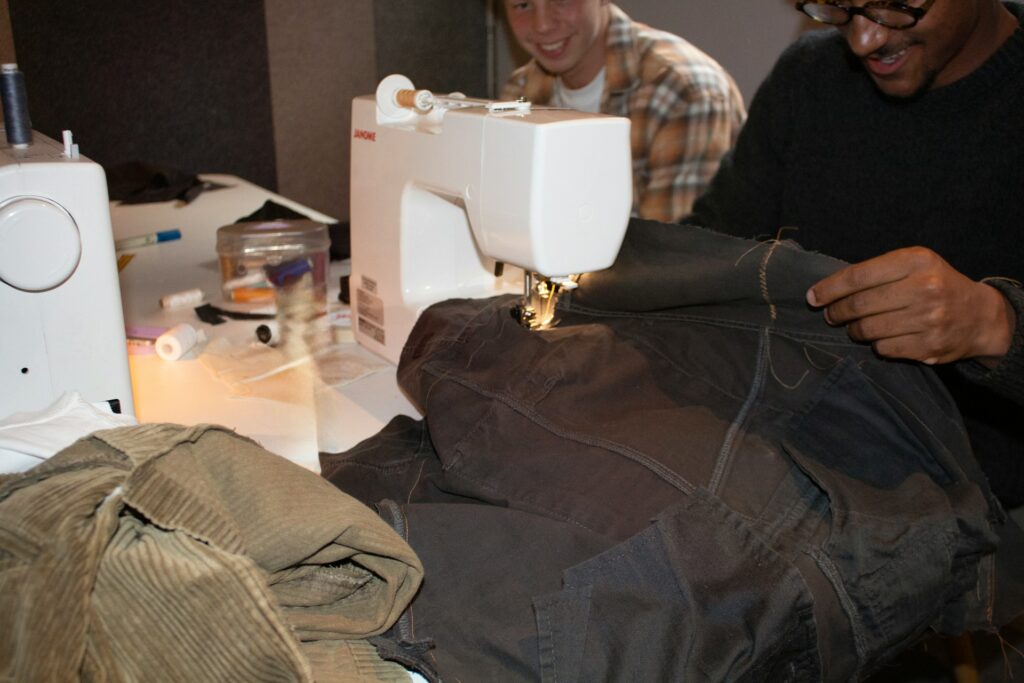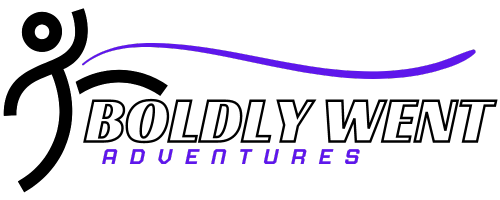
Creating custom apparel that looks professional and stands the test of time requires more than just a great design. The foundation of any successful custom clothing project lies in two critical decisions: fabric selection and print technique choice.
These elements work together to determine everything from the final appearance and durability to the overall cost and production timeline of your project.
Whether you’re launching a business, creating team uniforms, or producing promotional merchandise, understanding the relationship between different fabrics and printing methods will help you make informed decisions.
The wrong combination can result in poor print quality, premature wear, or colors that don’t match your expectations. Conversely, the right pairing can create custom clothing that exceeds your vision while staying within budget.
Many people searching for “shirt logo printing near me” focus primarily on location and price, but the most important factors for long-term satisfaction are fabric quality and appropriate print method selection.
This comprehensive approach ensures your custom apparel project delivers the professional results you’re seeking.
Understanding Fabric Fundamentals for Custom Printing
Cotton: The Classic Choice
Cotton remains the most popular fabric for custom apparel due to its versatility and print-friendly characteristics. This natural fiber absorbs inks exceptionally well, making it compatible with virtually all print techniques.
The breathable nature of cotton makes it comfortable for everyday wear, while its durability ensures designs remain vibrant through multiple wash cycles.
100% cotton works particularly well for:
- Screen printing applications
- Heat transfer vinyl projects
- Direct-to-garment printing
- Embroidery work
Cotton blends, typically combining cotton with polyester, offer additional benefits like reduced shrinkage and improved shape retention. These blends are ideal for businesses creating uniforms or promotional items that need to maintain their appearance over time.
Polyester: Modern Performance Material
Polyester has evolved significantly from its early reputation as a synthetic alternative. Modern polyester fabrics offer moisture-wicking properties, fade resistance, and excellent shape retention. However, polyester requires specific print techniques to achieve optimal results.
Key considerations for polyester printing:
- Sublimation printing works exclusively on polyester
- Traditional plastisol inks may not adhere properly
- Heat-sensitive nature requires temperature-controlled processes
- Excellent for athletic and performance wear applications
Fabric Blends: Balanced Performance
Poly-cotton blends combine the best characteristics of both materials. Common ratios include 50/50, 60/40 (cotton/polyester), and tri-blends that incorporate rayon for additional softness. These blends offer:
- Enhanced durability compared to 100% cotton
- Better print adhesion than pure polyester
- Reduced shrinkage and improved fit retention
- Cost-effective option for large quantity orders
Screen Printing: Time-Tested Excellence
When Screen Printing Excels
Screen printing delivers unmatched quality for large quantity orders, typically becoming cost-effective at 50+ pieces. This traditional method pushes ink through mesh screens onto fabric, creating vibrant, durable prints that can withstand countless wash cycles.
Optimal screen printing scenarios:
- Bulk orders with identical designs
- Simple designs with few color variations
- Solid color prints requiring opacity
- Budget-conscious projects with high quantities
Fabric Compatibility
Cotton and cotton blends work exceptionally well with screen printing. The natural fibers absorb plastisol and water-based inks effectively, creating prints that become part of the fabric rather than sitting on top. Darker fabrics may require additional base layers for optimal color vibrancy.
Screen printing limitations include:
- High setup costs for small quantities
- Limited detail reproduction capability
- Color separation requirements increase costs
- Not suitable for full-color photographic images
Direct-to-Garment: Digital Precision
Modern Printing Technology
Direct-to-garment (DTG) printing uses specialized inkjet technology to print designs directly onto fabric fibers. This method excels at reproducing complex designs with unlimited colors, making it perfect for detailed artwork or photographic images.
DTG advantages include:
- No minimum quantity requirements
- Unlimited color options
- Excellent detail reproduction
- Quick turnaround times for small orders
Fabric Requirements
DTG printing requires specific fabric characteristics for optimal results. 100% cotton provides the best ink absorption and color vibrancy. Light-colored garments produce the most accurate color reproduction, while dark garments require a white base layer that can affect the final print texture.
Pre-treatment requirements:
- Cotton content should exceed 80% for the best results
- Fabric must be pre-treated for proper ink adhesion
- Smooth fabric surfaces produce superior detail
- Ring-spun cotton offers premium print quality
Heat Transfer Methods: Versatile Solutions
Vinyl Heat Transfer
Heat transfer vinyl (HTV) creates durable, professional-looking designs by applying colored vinyl pieces under heat and pressure. This method works well for simple designs, text, and logos with solid colors.
HTV applications:
- Names and numbers for sports teams
- Simple logo applications
- Single or few-color designs
- Durable outdoor and athletic wear
Digital Heat Transfer
Digital heat transfer prints designs onto special transfer paper, then applies them to garments using heat press equipment. This method allows for full-color designs and photographic reproduction at reasonable costs for small quantities.
Benefits include:
- Full-color capability without color limitations
- Suitable for one-off or small quantity orders
- Quick production turnaround
- Compatible with most fabric types
Sublimation Printing: Permanent Color Integration
The Science Behind Sublimation
Sublimation printing uses heat to convert solid dye particles into a gas, which then penetrates polyester fibers and returns to solid form. This process creates prints that become part of the fabric structure, resulting in vibrant colors that won’t crack, peel, or fade.
Sublimation requirements:
- Polyester content must exceed 65% for optimal results
- White or light-colored base fabrics only
- Specialized sublimation inks and papers required
- High-temperature heat press equipment is necessary
Performance Applications
Sublimation excels for athletic wear, outdoor gear, and any application requiring permanent, fade-resistant graphics. The process works particularly well for all-over prints and complex, multi-colored designs.
Ideal sublimation projects:
- Sports uniforms and jerseys
- Performance and activewear
- Full-coverage design applications
- Items requiring wash durability
Embroidery: Premium Texture and Dimension
Traditional Craftsmanship Meets Modern Technology
Embroidery creates dimensional designs using colored threads stitched directly into fabric. Modern computerized embroidery machines can reproduce complex logos and designs with precise detail and professional appearance.
Embroidery advantages:
- Premium, professional appearance
- Excellent durability and longevity
- Works on virtually any fabric type
- Adds perceived value to garments
Design and Fabric Considerations
Embroidery works best with designs that translate well to thread-based reproduction. Simple logos with clean lines produce better results than complex, detailed artwork. Fabric selection impacts embroidery quality, with stable, medium-weight materials providing the best foundation.
Optimal embroidery fabrics:
- Woven materials like polo shirts and dress shirts
- Stable knits with minimal stretch
- Canvas and twill for caps and bags
- Fleece and outerwear materials
Making the Right Choice for Your Project
Quantity and Budget Considerations
Project quantity significantly impacts the most cost-effective print method selection. Screen printing becomes economical for larger orders, while DTG and heat transfer methods suit smaller quantities better. Consider both immediate costs and long-term value when making decisions.
Budget-conscious strategies:
- Combine similar designs to increase screen printing quantities
- Consider simplified designs to reduce color separation costs
- Evaluate fabric upgrade costs against durability benefits
- Factor in reorder potential when selecting methods
End-Use Requirements
Consider how the finished garments will be used, washed, and stored. Athletic wear requires different performance characteristics than promotional t-shirts or formal uniforms. Match fabric and print method combinations to expected use conditions.
Performance requirements:
- Wash frequency and temperature expectations
- Outdoor exposure and UV resistance needs
- Stretch and movement requirements
- Professional appearance standards
Timeline and Production Constraints
Different print methods require varying production times and minimum quantities. Screen printing may require longer setup times but faster per-unit production for large orders. DTG offers quick turnaround for small quantities but slower per-unit speeds for large orders.
When searching for “shirt logo printing near me,” discuss timeline requirements upfront to ensure your local provider can meet your deadlines with your preferred fabric and print method combination.
Achieving Professional Results Every Time
Success in custom apparel projects comes from understanding how fabric selection and print techniques work together.
The best results occur when these elements complement each other rather than compete. Take time to discuss your specific needs with printing professionals who can recommend optimal combinations based on your quantity, budget, timeline, and quality requirements.
Consider ordering samples before committing to large quantities, especially when trying new fabric and print method combinations. This small investment can prevent costly mistakes and ensure your final products meet expectations.
Professional custom clothing providers will guide you through fabric selection and print technique options, helping you achieve the best possible results within your budget and timeline constraints.
The combination of quality materials, appropriate printing methods, and experienced craftsmanship creates custom apparel that represents your brand or organization with pride.
Last modified: September 28, 2025








